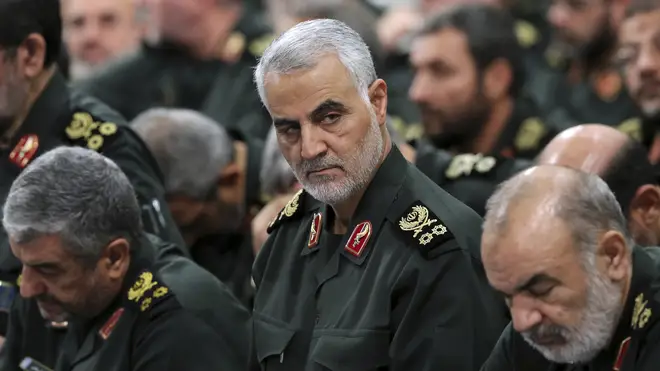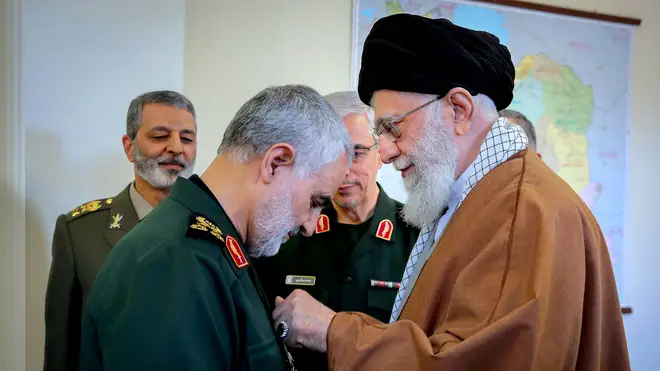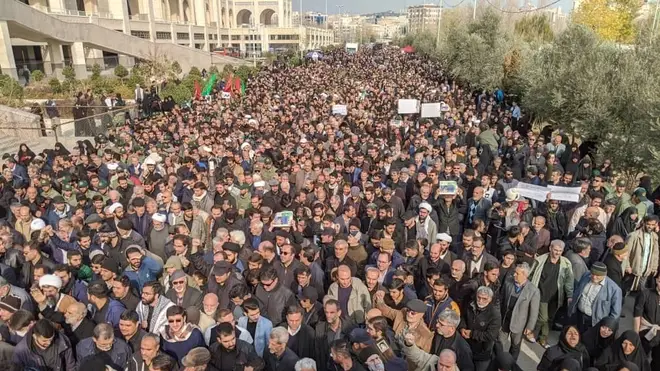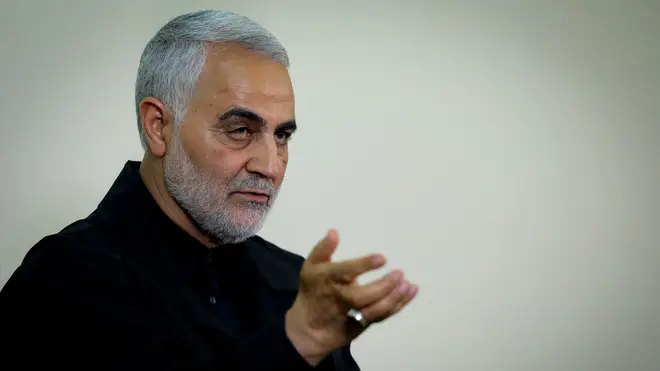
Henry Riley 3pm - 6pm
3 January 2020, 10:55
Who was Qassem Soleimani? All you need to know about the Iranian Major General who was killed in a US airstrike at Baghdad International Airport.
Major General Qassem Soleimani was once described by Iran's Supreme Leader Ayatollah Ali Khamenei as a "living martyr of the revolution."
He was an icon of the country's 1979 Islamic Revolution who was hailed a figure of national resilience against four decades of US pressure and sanctions.
But, for the US and Israel, he was an enemy of the west and a shadowy figure in charge of Iran's proxy forces.
In the eyes of those in Washington and Tel Aviv, he was directly responsible for fighters in Syria backing President Bashar al-Assad and for the deaths of American troops in Iraq.
The General survived Iran's long war with Iraq in the 1980s and took control of the Revolutionary Guard's elite Quds Force - the troops responsible for the Islamic Republic's foreign campaigns.
His name was fairly unknown in the Middle-Eastern country until the US invaded Iraq in 2003, however his popularity and allure grew once American officials began calling for his assassination.

A number of rumours circulated about his death over the years. One of those stories involved a 2006 plane crash that killed other military officials in north-western Iran, and another was a 2012 Damascus bombing that killed top aides of Assad.
By the time he was killed in the early hours of Friday morning, Gen Soleimani had become the nation's most recognisable battlefield commander who was as powerful, if not more so, than its civilian leadership.
"The warfront is mankind's lost paradise," Gen Soleimani recounted in a 2009 interview.
"One type of paradise that is portrayed for mankind is streams, beautiful nymphs and greeneries. But there is another kind of paradise ... The warfront was the lost paradise of the human beings, indeed."
US President Donald Trump ordered the military to take "decisive defensive action to protect US personnel abroad by killing" the 62-year-old commander.
Iran's upper echelons swiftly vowed "crushing revenge" for the assassination, which follows years of tensions between the Islamic Republic and the US.
The US President ripped up the rulebook by pulling out of Tehran's nuclear deal with world powers in May 2018.

Born on 11 March 1957, Gen Soleimani was believed - by Iranians - to have grown up near the mountainous and historic Iranian town of Rabor.
However, the US State Department claims he was born in the Iranian religious capital of Qom.
Information about his childhood is largely unknown, but it is thought that he was born to a peasant father.
Following the 1979 Islamic Revolution, the commander joined the Revolutionary Guard and was later sent to Iran's north-west alongside forces that suppressed Kurdish unrest following the revolution.
In the following months, Iraq invaded Iran, initiating a long and bloody eight-year war that left more than one million people dead.
Gen Soleimani developed a reputation for being opposed to "meaningless deaths" on the battlefield, but more or less disappeared from public view following the conflict.
He took charge of the Quds Force following the presidency of Hashemi Rafsanjani, who ruled from 1989 to 1997.

In secret US diplomatic cables released by WikiLeaks, American officials openly discussed Iraqi efforts to reach out to the General to stop rocket attacks on the highly secured Green Zone in Baghdad in 2009.
Another cable in 2007 outlined then-Iraqi president Jalal Talabani offering a US official a message from Gen Soleimani acknowledging having "hundreds" of agents in the country, while pledging: "I swear on the grave of (the late Ayatollah Ruhollah) Khomeini I haven't authorised a bullet against the US."
US forces dismissed his claim and blamed the Quds Force for an attack in Karbala that killed five American troops, as well as for training and supplying the bomb makers of improvised explosive devices.
In a 2010 speech, US General David Petraeus recounted a message from Gen Soleimani that he said explained the scope of the Iranian's powers.

"He said, 'Gen Petraeus, you should know that I, Qassem Soleimani, control the policy for Iran with respect to Iraq, Lebanon, Gaza and Afghanistan'," Gen Petraeus said.
The US and the United Nations put the Iranian military chief on sanctions lists in 2007, however his travels did not stop.
In 2011, US officials also named him as a defendant in an outlandish Quds Force plot to allegedly hire a purported Mexican drug cartel assassin to kill a Saudi diplomat.
But his greatest notoriety would arise from the Syrian civil war and the rapid expansion of Isis.
Iran, a major backer of Assad, sent Gen Soleimani into Syria several times to lead attacks against Isis and others opposing Assad's rule.
While a US-led coalition focused on airstrikes, several ground victories for Iraqi forces came with photographs emerging of Gen Soleimani leading, never wearing a flak jacket.
"Soleimani has taught us that death is the beginning of life, not the end of life," one Iraqi militia commander said.